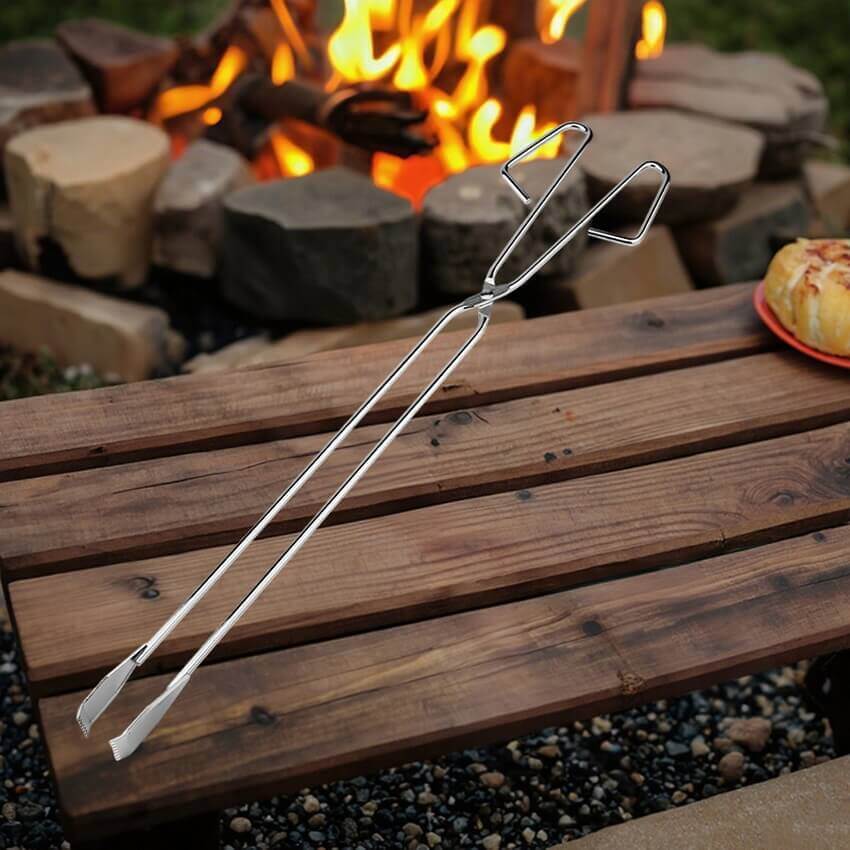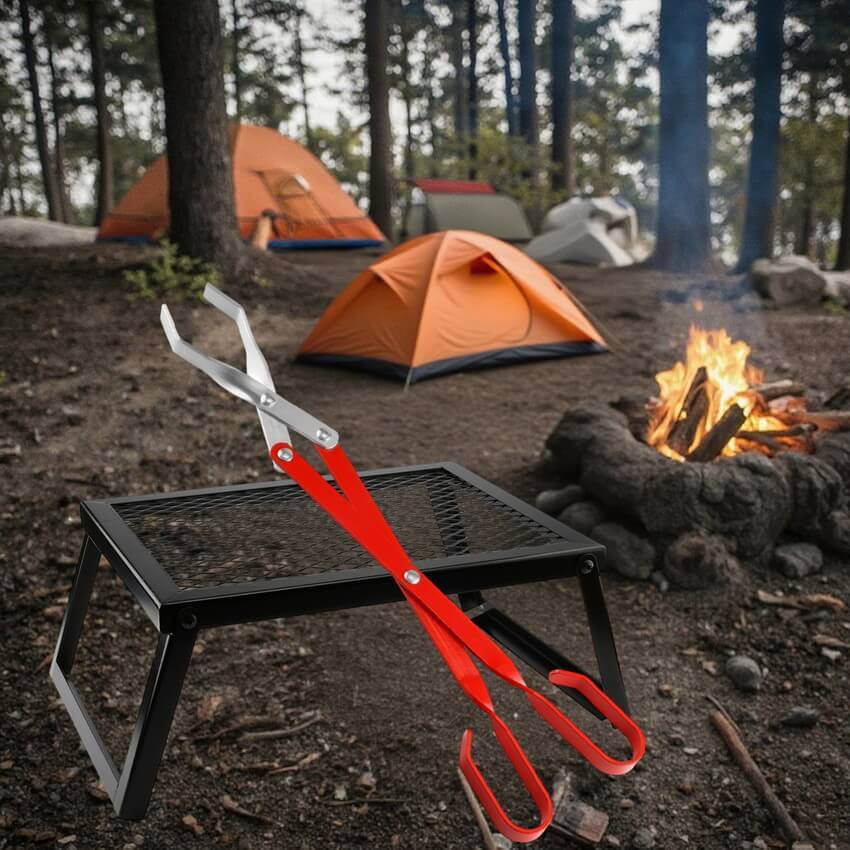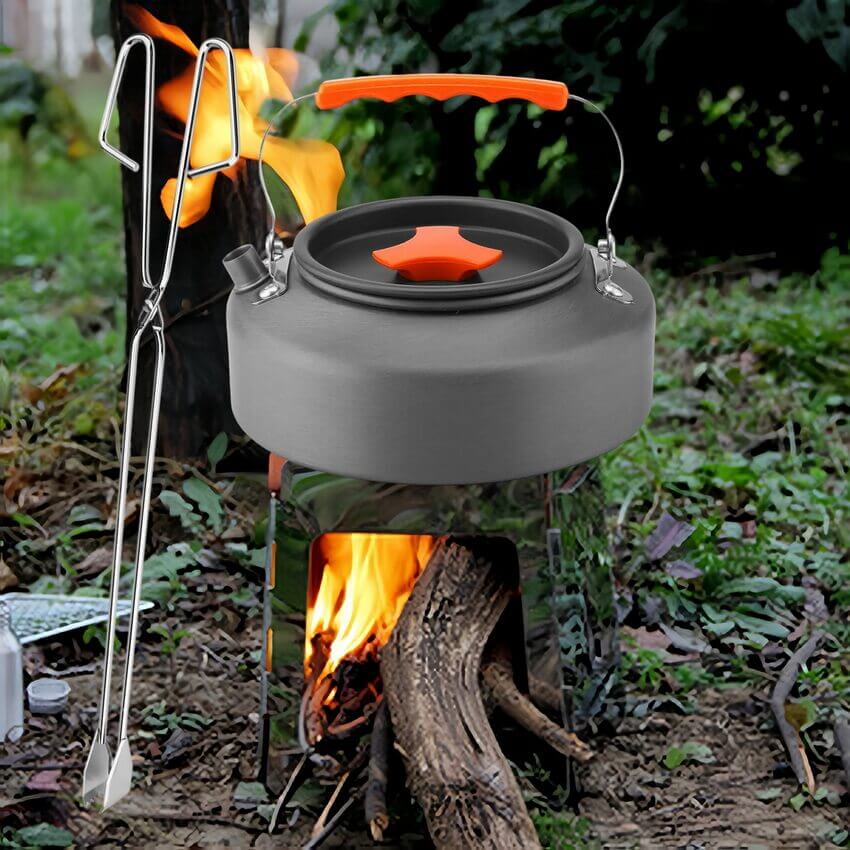![]() Windy.
Windy.
 WeChat
WeChat
 WhatsApp
WhatsApp
Click:285 seen
In the global market, charcoal tongs are essential tools for daily life and various activities, and they come in a wide variety of types, each with its own
unique features in terms of design, material, and application.
European household charcoal tongs: Emphasizing aesthetics and functionality
European household charcoal tongs often combine functionality with elegant design. Many products are made of high-quality stainless steel, which
not only has excellent corrosion resistance but also presents a sleek and modern appearance. For instance, a certain German brand's stainless steel
charcoal tongs have a polished surface, making them easy to clean and maintain. The ergonomic handle design fits the hand perfectly, reducing hand
fatigue during prolonged use.
Structurally, some European charcoal tongs feature a folding design. When not in use, they can be folded into a compact size, saving storage space.
This is particularly popular in small European apartments. A survey shows that 65% of European households prefer folding charcoal tongs, precisely
because of their space-saving advantage. Additionally, the jaws of these tongs are usually designed with serrated patterns, which enhance grip when
picking up charcoal or other items, preventing them from slipping.

American outdoor charcoal tongs: Emphasizing durability and multi-functionality
With the prevalence of outdoor barbecues and camping in the United States, American outdoor charcoal tongs are designed to be robust and versatile.
Most products are made of heavy-duty steel to ensure they can withstand the harsh outdoor environment. For instance, a well-known American
outdoor brand's charcoal tongs are 3 millimeters thick, 50% thicker than ordinary ones, significantly increasing their load-bearing capacity.
Length is another key feature of American outdoor charcoal tongs. They are usually 60 - 70 centimeters long, allowing users to keep a safe distance
from the flames while operating and avoiding burns. Some models even have additional functions, such as a bottle opener at the end of the handle or
a small scraper on the jaws, which can be used to clean the grill, making them more versatile in outdoor activities. A market research report shows that
multi-functional outdoor charcoal tongs account for 70% of the American outdoor tool market.

Japanese charcoal tongs: Precision and refinement coexist
Japanese charcoal tongs are renowned for their precision and refinement. They are usually handcrafted by skilled artisans, with attention to detail.
Many products are made of high-carbon steel, which is hard and wear-resistant. The jaws of Japanese charcoal tongs are typically designed to be
very thin and sharp, allowing for precise picking up of small pieces of charcoal. This is crucial for controlling the fire in traditional Japanese charcoal
grills.
In addition, Japanese charcoal tongs place great emphasis on the comfort of the handle. Some are made with natural wood such as cherry or oak, and
after polishing, they feel smooth and warm in the hand. A Japanese charcoal shop owner stated that their handcrafted charcoal tongs not only perform
well but are also regarded as works of art by many enthusiasts. Some limited editions are even highly sought after by collectors.

African Traditional Charcoal Tongs: Blending Local Materials and Culture
In Africa, traditional charcoal tongs are often made from local materials, reflecting the unique culture and craftsmanship of the region. In some rural
areas, people use bamboo or hardwood to make the handles of the tongs, which are readily available and have good insulation properties. The jaws
are usually made of iron forged by local blacksmiths.
These traditional charcoal tongs often have unique shapes, and some are even carved with traditional patterns and symbols, symbolizing good luck
and prosperity. They are not only practical tools but also carry the cultural heritage of the local people. With the development of tourism, some African
traditional charcoal tongs have become popular souvenirs among tourists.
In conclusion, charcoal tongs from all over the world demonstrate rich diversity, each adapted to the specific needs and cultural backgrounds of
different regions. Whether it is the aesthetically pleasing European style, the durable American outdoor type, the precisely crafted Japanese style, or
the culturally rich traditional African type, they all play significant roles in their respective fields.

